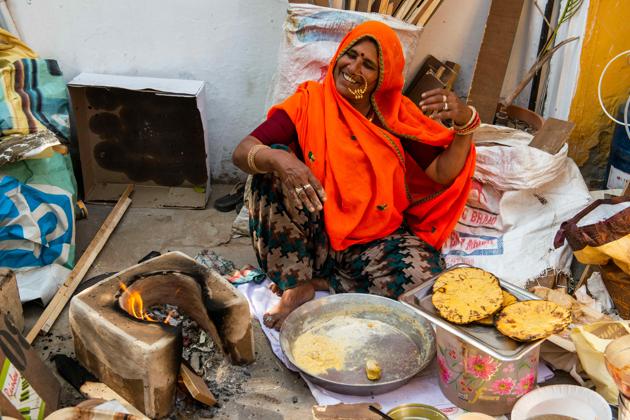Indoor air pollution: Don’t brush it aside
In the discussions on air pollution, IAP often loses out to outdoor pollution. But as the extent of the challenge shows, IAP is an equally big problem. Let’s not brush it under the carpet.
Last week, The Lancet had some grim news for India: Air pollution killed 1.7 million Indians in 2019, said a report published in the journal. Outdoor air pollution is not only increasing, but also killing more: The death rate from outdoor air pollution has increased during this period by 115%, it warned. There was, however, a sliver of good news: Indoor, or household, air pollution (IAP) caused 64% fewer deaths in the last two decades (1990-2019).

The use of traditional biomass and cookstoves is one of the key causes of IAP; incomplete combustion of biomass produces a range of toxic gases. According to the World Health Organization, one of the most dangerous types of pollution is perhaps the most familiar: Smoke. Burning fuels such as dung, wood and coal in inefficient stoves or open hearths produces a variety of health-damaging pollutants, including particulate matter (PM), methane, carbon monoxide, polyaromatic hydrocarbons and volatile organic compounds. According to the 2011 Census, about 65.9% of India’s households depend on solid biomass, including firewood, crop residue, and cow dung, as the primary fuel for cooking. In 2019, nearly 0.6 million Indians died due to IAP, said a report published by the US-based think tank, Health Effects Institute. Unsurprisingly, women bear the brunt “black roofs, black lungs”.
Experts say two central schemes — the Pradhan Mantri Ujjwala Yojana (that provides LPG connections to Below Poverty Line families) and the Unnat Chulha Abhiyan (that promotes improved biomass cookstove) — are saving people from the ill effects of IAP. In addition, a range of civil society groups are helping in awareness-building, extending access to clean-cooking solutions (forced draught, natural draught, induction cooktops and solar cooktops), and making affordable products and technologies available to users.
The positive news on IAP in The Lancet report should not make us complacent. There are two challenges when it comes to containing IAP: One, ensuring the sustained adoption and usage of clean-cooking tech, which still is a challenge despite the government, private players, funding agencies, and NGOs pushing the pedal on capital infusion, technology development and clean cooking programmes. There are a number of reasons for this, ranging from culturally unsuitable designs to programmatic challenges.
“In the absence of a shared understanding on what constitutes adoption of clean-cooking solutions and accepted indicators according to which programmes can be understood and evaluated, there is a lack of clarity and agreement on both the barriers that need to be overcome and the drivers that need to be fuelled to address this challenge,” explains Rewasa Nishchal, lead, Clean Cooking Initiative, Tata Trusts.
Since women are key to the use and popularisation of clean-cooking technologies (though they are not always the decision-makers when it comes to buying/installing them), Tata Trusts is trying to nudge behaviourial change through awareness-building on the deleterious and long-term impacts of IAP on women’s health. In four states, Tata Trusts has distributed “wellness COEL bangles”, which can detect the presence and level of IAP, particularly CO, in a room, to rural women. Once the level of CO inside a room exceeds an acceptable range, alarms and pre-loaded audio messages warn the bangle-user to exit the polluted zone.
The second IAP challenge is to ensure that people don’t opt for dirty fuels as their secondary fuel option for cooking. Unfortunately, this seems to have happened due to Covid-19. The lockdown saw more meals being cooked at home than usual. This may have led to an almost 2% — or about 150 tons per day — increase in total household PM 2.5 emissions in the country, according to the preliminary findings of a study being conducted by World Resources Institute (WRI) India. In predominantly rural states, the average ambient PM2.5 concentration ranges from 22 to 112 µg/m3, while indoor PM2.5 concentration ranges from 106 to 512 µg/m3. The finding of high indoor PM2.5s suggests a need for more awareness and cleaner-fuel use applications, including a reliable LPG stream, to ensure that people don’t use dirty secondary fuel. “Studies must consider primary and secondary fuel users and PM2.5 exposure for reporting the risk and air pollution emissions results,” says Ajay Nagpure, head of WRI-India’s air pollution division. In discussions on air pollution, IAP often loses out to outdoor pollution. But as the extent of the challenge shows, IAP is an equally big problem. Let’s not brush it under the carpet.
kumkum.dasgupta@htlive.com
The views expressed are personal




